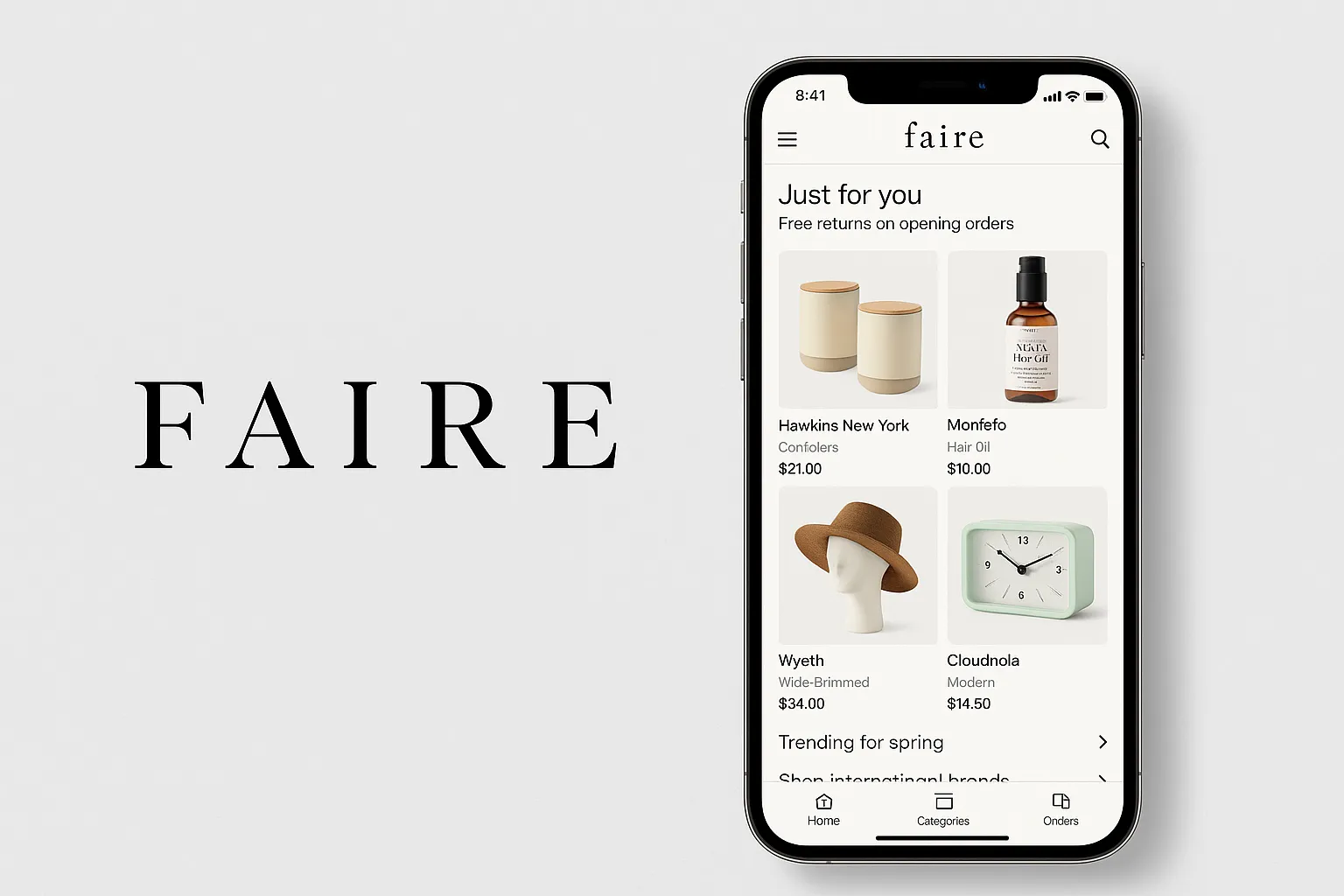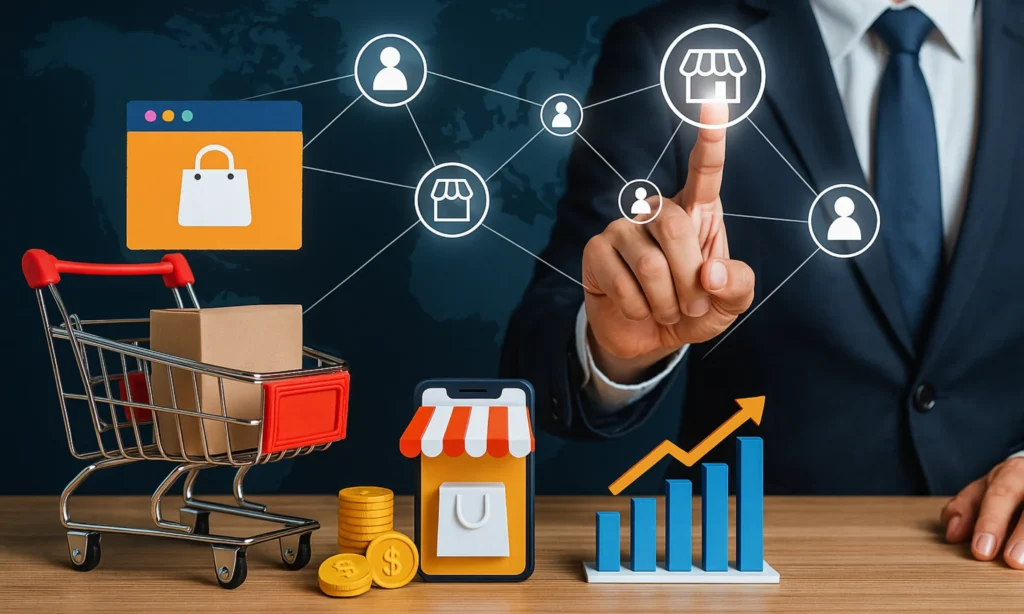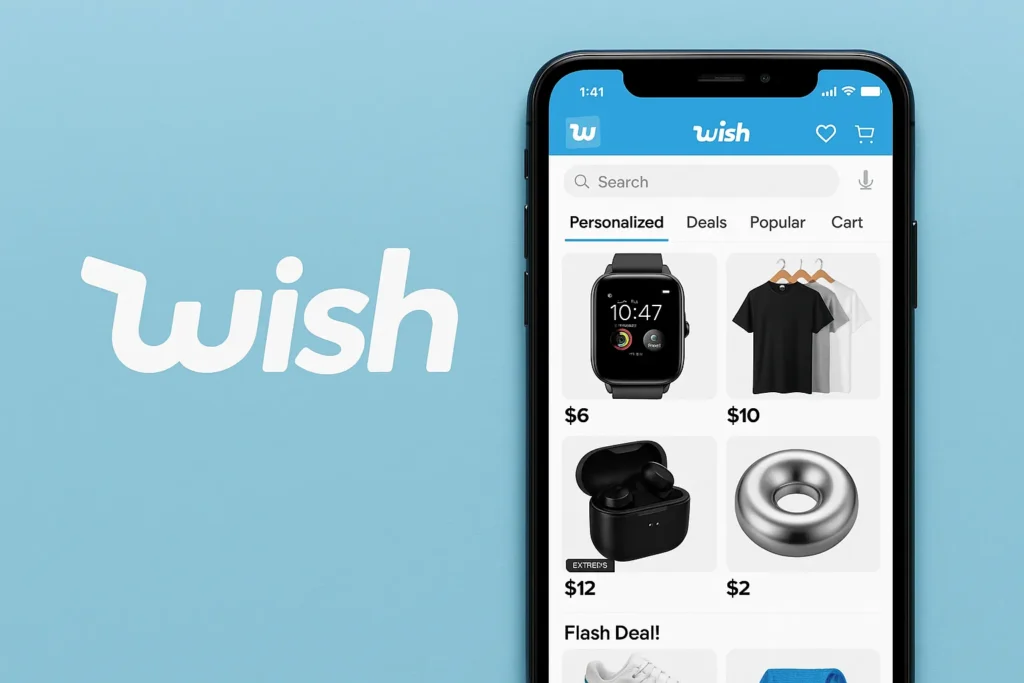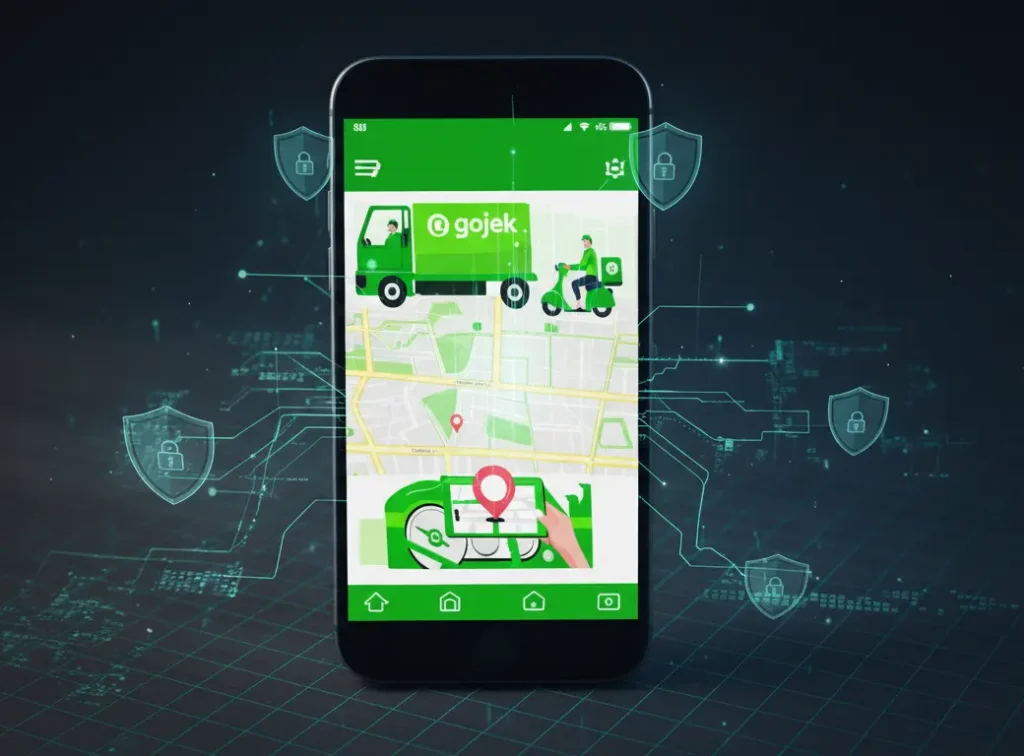Imagine you’re a small boutique owner searching for unique products to stock—handmade candles, eco-friendly accessories, artisanal snacks. Traditionally, you’d spend months attending trade shows, negotiating with suppliers, and taking risks on inventory. Faire changed all of that.
Faire is now the #1 wholesale marketplace in the USA, allowing retailers to discover independent brands, order in small quantities, enjoy net-60 payment terms, and return unsold products. Launched in 2017 by former Square employees, Faire has grown into a billion-dollar marketplace empowering hundreds of thousands of retailers and independent makers across North America and Europe.
Its impact in 2025 is massive—especially for small brands trying to reach global buyers without huge marketing budgets.
What is Faire? The Simple Explanation
Faire is a wholesale marketplace that connects independent brands with local retailers. Instead of attending physical trade shows or negotiating individually, both sides can buy and sell products online with flexible terms, low risk, and fast onboarding. In simple words: Faire helps small retailers discover unique products, and it helps brands reach more stores without upfront marketing costs.
The Core Problem Faire Solves
Traditionally, wholesale buying involves:
- High minimum orders
- Expensive trade shows
- Risky inventory commitments
- Difficult brand discovery
Faire removes all these barriers with easy ordering, net-60 payments, free returns, and personalized product recommendations.
Who Uses Faire?
Retailers:
- Boutiques
- Gift shops
- Home décor stores
- Lifestyle stores
- Specialty food stores
Brands & Makers:
- Handmade, artisanal creators
- Small manufacturers
- Direct-to-consumer brands
- Eco-friendly & niche product makers
Current Market Position (2025 Stats)
- 700,000+ retailers globally
- 100,000+ brands listed
- Operating in 15+ countries
- Raised over $1.2 billion in funding
- Estimated market valuation: $12–14 billion (2025 projection)
- One of the fastest-growing B2B marketplaces in North America
Why Faire Became Successful
- Solved a huge gap in wholesale buying
- Offers low-risk ordering (free returns on opening orders)
- Helps brands unlock new revenue channels
- Uses powerful AI to match stores with products
- Provides better terms than traditional distributors
- Focuses heavily on the “support local” movement
Read more: Complete Guide to Starting an E-commerce App Business
How Does Faire Work? Step-by-Step Breakdown
Faire works as a two-sided marketplace—one side for retailers, the other for brands. Its success comes from simplifying the wholesale buying and selling process through smart recommendations, flexible payment options, and streamlined logistics.
How Faire Works for Retailers (Buyers)
1. Account Creation
- Sign up with business details (store name, category, location).
- Verification happens instantly in most cases.
- Retailers receive personalized recommendations based on their store type.
2. Discovering Products
- AI-powered search shows trending and best-selling products.
- Retailers can explore categories: home décor, wellness, fashion, stationery, food, etc.
- Filters include minimum order, location, eco-friendly labels, and brand story.
3. Ordering Process
- Retailers place small or flexible opening orders.
- They can use Net-60 payment terms (pay after 60 days).
- First-time orders from brands often include free returns for unsold items.
4. Example User Journey
Scenario:
A boutique owner wants organic candles for spring season.
Steps:
- Searches “soy candles”
- Gets matched with 20+ independent makers
- Places a small order from 3 brands using Net-60
- Receives goods in 5–7 days
- Returns unsold inventory (if eligible)
- Reorders best sellers at wholesale price
This reduces risk and keeps inventory fresh.
How Faire Works for Brands (Sellers)
1. Seller Onboarding
- Brands sign up with product catalog, prices, and MOQ (minimum order quantity).
- Faire reviews and approves listings within a few days.
2. Operating on the Platform
- Brands receive orders from thousands of retailers globally.
- They ship products directly or use Faire’s logistics partners.
- AI recommendations push their items to the right retailers.
3. Earnings & Commission Structure (2025)
- 0% commission on reorders (huge benefit)
- 15–25% commission on first orders from new customers Faire brings
- Brands keep full control over pricing and minimum order limits
- Payments are settled within a few days after shipping
This model encourages long-term brand–retailer relationships.
Technical Overview (Simple Explanation)
Architecture (Easy to Understand)
Faire uses a multi-layer marketplace system:
- Frontend: The app and website where buyers browse and brands manage catalogs
- Backend: Order management, payment system, catalog search, AI matching
- Logistics Layer: Shipping, tracking, returns, delivery updates
- Analytics Layer: Sales insights, demand forecasting, reorder predictions
Key Technologies Used (Simplified)
- AI & ML for product matching and personalized recommendations
- Recommendation engines for suggesting trending items
- Secure payment gateways for Net-60 and instant payouts
- Cloud infrastructure (AWS/Google Cloud) for large data handling
- Mobile tech stack: Swift (iOS), Kotlin (Android), React for web
- APIs for inventory sync, shipping, and brand analytics
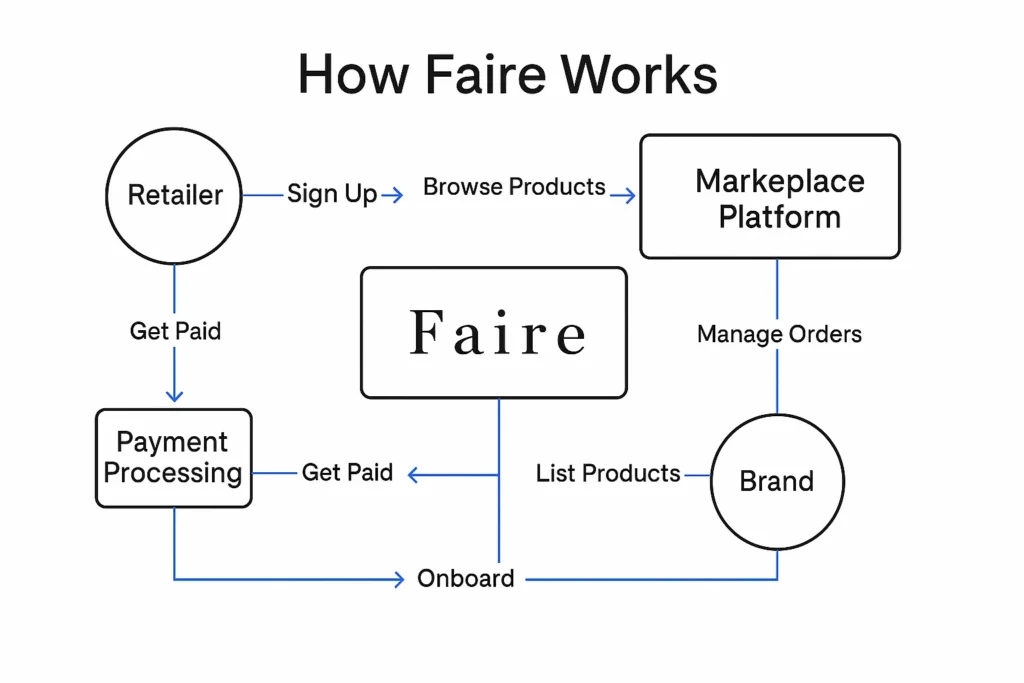
Faire’s Business Model Explained
Faire operates on a wholesale marketplace business model, earning money through commissions, fees, and financial services while keeping the platform beneficial for both retailers and brands.
How Faire Makes Money (All Revenue Streams)
1. Commission on First Orders
- Faire charges 15–25% commission on the first order a retailer places with a brand.
- If the retailer was brought in by Faire’s marketplace, the commission applies.
- Reorders have 0% commission, encouraging long-term brand-retailer relationships.
2. Payment Processing Fees
- Faire earns small fees each time retailers make payments through the platform.
- This includes credit cards, ACH, or Net-60 repayment.
3. Logistics & Fulfillment Services
Faire offers optional fulfillment tools like:
- Discounted shipping
- Integrated labels
- Warehouse partnerships
Brands using these enhanced services pay a small fee.
4. Interest on Net-60 Payment Terms
Retailers pay after 60 days.
- Faire funds the upfront retail orders.
- They earn revenue from financial handling and repayment processing.
5. Brand Marketing & Promotion Fees
Brands can pay for:
- Sponsored placements
- Boosted listings
- Category-level promotions
- New-product visibility
These ads improve discoverability.
6. Currency Conversion & International Fees
As Faire expands in Europe and Canada, it collects fees for:
- Cross-border payments
- Currency conversion
- International shipping management
Pricing Structure (2025)
For Retailers:
- Free to join
- Net-60 payment terms available
- Free returns on eligible first orders
- No subscription required
For Brands:
- 15–25% commission on Faire-generated first orders
- 0% commission on reorders
- Optional fees for marketing and logistics services
Market Size and Growth Stats (2025)
- Global wholesale eCommerce market: $6.5 trillion
- Independent retail segment: growing 12% year-over-year
- Faire valuation (2025 projection): $12–14 billion
- Faire’s annual GMV (Gross Merchandise Value): $5–6 billion
- Retailers on Faire grew from 400K to 700K+ between 2023–2025
- Brands surpassed 100,000+ in 2025
Faire is dominating the “independent retail wholesale” space.
Profit Margins Insight
Faire’s profit margins come from:
- Strong take-rate from first orders
- Low operational overhead vs traditional wholesalers
- Scalable marketplace model
- High reorder volume (0% commission but increased platform stickiness)
Investors consider Faire a high-lifetime-value marketplace because retailers reorder frequently.
Revenue Model Breakdown (Table)
| Revenue Stream | Description | Estimated Share (2025) |
| Commission on First Orders | 15–25% fee on new buyers introduced by Faire | 55% |
| Payment Processing Fees | Fees on transactions and Net-60 repayments | 10% |
| Logistics & Shipping Fees | Revenue from shipping labels & fulfillment | 15% |
| Marketing/Promotion Fees | Sponsored placements & ads | 12% |
| Cross-border & Currency Fees | International transactions | 8% |
Key Features That Make Faire Successful
Faire’s rapid rise in the wholesale world is not an accident—it’s the result of powerful, retailer-friendly features, strong technology, and a marketplace that genuinely solves real problems for small businesses. Below are the top features that make Faire stand out in 2025.
Top 10 Features of Faire (with Benefits & Why They Matter)
1. AI-Powered Product Recommendations
Why it matters: Retailers save hours searching for new products.
Benefit: Matches stores with products that fit their style, location, and customer behavior.
Innovation: Machine learning models analyze buying trends across 700K+ retailers.
2. Net-60 Payment Terms
Why it matters: Retailers get 60 days to pay—crucial for managing cash flow.
Benefit: Allows small stores to test products without financial stress.
Innovation: Faire handles financial risk using advanced risk-scoring systems.
3. Free Returns on Opening Orders
Why it matters: Zero-risk buying encourages retailers to try new brands.
Benefit: Increases trust and promotes exploring niche products.
Innovation: Automated return policies and logistics partnerships streamline the process.
4. Real-Time Inventory & Pricing Sync
Why it matters: No more ordering products that are out of stock.
Benefit: Retailers always see accurate stock and wholesale pricing.
Innovation: API integrations with brand inventory systems.
5. Brand Storefronts
Why it matters: Helps brands showcase their identity, story, and catalog.
Benefit: Creates a digital trade show experience.
Innovation: Custom storefront builder with analytics and performance insights.
6. Reorder Automation (0% Commission on Reorders)
Why it matters: Drives strong brand–retailer relationships.
Benefit: Retailers reorder quickly; brands save money.
Innovation: Predictive reorder reminders based on past buying behavior.
7. Global Marketplace Coverage
Why it matters: Brands can instantly sell in the USA, Canada, UK, EU.
Benefit: A single platform to access worldwide retailers.
Innovation: Automated tax, shipping, and currency handling.
8. Faire Direct
Why it matters: Lets brands invite their existing retailers with 0% commission forever.
Benefit: Helps brands consolidate wholesale operations.
Innovation: Smart onboarding and relationship-tracking tools.
9. Advanced Analytics Dashboard
Why it matters: Brands understand who’s buying, reordering, and trending.
Benefit: Retailers track best sellers and seasonal performance.
Innovation: Data visualization + AI forecasting.
10. Mobile App for Retailers & Brands
Why it matters: Wholesale on-the-go.
Benefit: Order management, chat, invoices, payments—all from mobile.
Innovation: Clean UI + faster browsing powered by edge caching.
Recent 2025 Updates on Faire
- Smarter AI matching for local seasonal products
- “Eco & Sustainable Badge” for verified green brands
- Faster Net-30/Net-60 approvals
- Faire Shipping 2.0 with discounted rates
- Higher-quality returns processing for USA + EU
- Predictive inventory planning for brands
- Personalized wholesale bundles for retailers
Faire is investing heavily in AI and automation to simplify wholesale commerce even further.
AI & ML Integrations (2025)
Faire uses machine learning for:
- Retailer–brand matching
- Sales prediction
- Fraud prevention
- Inventory planning
- Personalized discovery feed
- Dynamic wholesale pricing insights
The platform has become smarter, faster, and more profitable for both sides due to data-driven decisions.
What Sets Faire Apart From Competitors
- Zero-risk wholesale (free returns + net payments)
- Global marketplace visibility for small brands
- No subscription required
- 0% commission on reorders
- Strong AI recommendation engine
- Better terms and support for small retailers
Faire’s balance between convenience + risk reduction is the real differentiator.

The Technology Behind Faire
Faire is built with a modern, scalable tech architecture designed to handle millions of product listings, transactions, recommendations, and cross-border operations. Even though it’s a complex platform internally, here’s a clean, simple explanation.
Tech Stack Overview (Simplified)
Frontend (What Users Interact With)
- React.js → Fast, responsive web experience
- Swift (iOS) & Kotlin (Android) → Native mobile apps for smooth browsing and ordering
- Next.js (likely) → For SEO-friendly pages and better performance
These tools ensure that browsing products feels fast and seamless for retailers and brands.
Backend (The Brain of Faire)
- Node.js + Python → Handles marketplace logic, orders, payments, and analytics
- PostgreSQL & MongoDB → Stores massive product catalogs, user profiles, and transaction data
- ElasticSearch → Powers fast product search and filtering
- Redis → Faster load times via caching
The backend is designed for high-volume wholesale transactions happening across multiple countries.
Cloud Infrastructure
- Likely using AWS or Google Cloud for:
- Global content delivery
- Scalable server resources
- Secure data storage
- Multi-region support
This helps Faire serve retailers across the USA, Canada, UK, and Europe without delays.
Real-Time Features Explained Simply
1. Live Inventory Sync
When brands update stock, retailers see it instantly.
This prevents overselling.
2. Real-Time Order & Shipping Updates
The app updates order status within seconds as brands print labels or ship.
3. Dynamic AI Recommendations
Product suggestions change in real time based on:
- Retailer browsing
- Trending products
- Seasonal demand
- Local buying patterns
Data Handling & Privacy (Easy Explanation)
Faire manages sensitive info like:
- Payment details
- Business credentials
- Store data
- Sales history
To keep it safe, they use:
- End-to-end encryption
- Secure payment gateways
- Fraud detection systems
- GDPR-compliant data storage (for EU users)
Scalability Approach
Faire scales like a modern global marketplace by using:
- Microservices architecture
- Auto-scaling servers
- Distributed databases
- Edge caching
This ensures the platform stays fast even during retail peak times (holidays, seasonal spikes).
Mobile App vs Web Platform
Mobile App Benefits
- Fast reorders
- Quick catalog browsing
- Push notifications
- On-the-go order management
Web Platform Benefits
- Bigger product discovery experience
- Easier catalog uploads for brands
- Advanced analytics dashboard
Most retailers use both—web for sourcing, mobile for reorders.
API Integrations
Faire integrates with:
- Inventory management systems
- Logistics providers
- Payment processors
- ERP/CRM tools
- E-commerce platforms
This creates a smooth backend flow from warehouse → retailer shelf.
Why This Tech Matters for Business
Faire’s technology ensures:
- Faster product discovery
- Lower risk for retailers
- Global reach for brands
- Reliable logistics
- Accurate AI-driven recommendations
- Streamlined financial operations
This is why Faire scaled from a startup to a billion-dollar marketplace in a few years.
Faire’s Impact & Market Opportunity
Faire has transformed the wholesale industry by bringing the entire trade show experience online. Its impact extends across brands, retailers, manufacturers, and the global independent retail economy.
Industry Disruption Caused by Faire
Faire changed how wholesale works by removing:
- High upfront inventory risks
- Manual brand discovery
- Expensive trade shows
- Large minimum orders
- Slow paper-based invoicing
Its biggest disruption:
Making wholesale accessible for small retailers and small brands at scale.
This is something traditional distributors never solved.
Market Statistics & Growth (2025)
- Global wholesale eCommerce market: $6.5 trillion
- Independent retail is growing at 12% YoY
- Faire’s GMV: $5–6 billion annually
- Retailers: 700,000+ worldwide
- Brands: 100,000+ listed
- Faire active in: USA, Canada, UK, France, Germany, Netherlands, Spain, Australia
- Over 1 million total transactions processed monthly
The numbers show Faire is dominating B2B wholesale for independent retail.
User Demographics & Behavior
Retailers
Mostly:
- Boutique owners
- Specialty stores
- Gift & craft shops
- Lifestyle stores
- Home décor and fashion stores
Behavior patterns:
- High reorder frequency
- Buying in small batches
- Relying heavily on seasonal trends
- Preferring Net-60 payment terms
Brands & Makers
Usually:
- Handmade creators
- Small manufacturers
- Eco-friendly & artisanal brands
- Local product makers
- DTC brands expanding into retail
Behavior patterns:
- High engagement with analytics
- Dependence on predictive reorder tools
- Focus on global expansion via Faire
Geographic Presence (2025)
Strongest regions:
- USA – Largest retailer base
- Canada – Fast-growing boutique market
- UK & EU – Rapid expansion
- Australia – Growing maker economy
Faire is planning deeper expansion into:
- Asia-Pacific
- Latin America
Future Projections
Between 2025–2030, Faire is expected to:
- Double its retailer base
- Expand into 10+ new countries
- Introduce AI-powered wholesale planning tools
- Add logistics warehouses for faster shipping
- Increase revenue from financial services (Net-60, factoring, credit tools)
Analysts expect Faire to become a $20–25 billion company within the next 5 years.
Opportunities for Entrepreneurs
Faire’s success has inspired demand for similar platforms — especially in niche wholesale markets such as:
- Beauty & cosmetics wholesale
- Organic food & grocery wholesale
- Handmade crafts wholesale
- Apparel wholesale
- B2B marketplace for ethnic, cultural, or local products
- Sustainable products wholesale
- Custom merchandise wholesale
These niche marketplaces are booming in 2025.
Natural Transition
This massive success shows how powerful the wholesale marketplace model is—and why many entrepreneurs now want to build their own Faire-like platform with faster onboarding, better curation, or region-specific features.
Building Your Own Faire-Like Platform
The rise of Faire has inspired thousands of entrepreneurs to launch their own wholesale marketplaces—especially in niche verticals or regional markets. A well-built Faire-like platform can generate strong recurring revenue, attract independent retailers, and help small brands reach global buyers.
Why Businesses Want Faire Clones
Because the model works. Simple.
Entrepreneurs choose Faire-style platforms because they offer:
- High scalability
- Predictable revenue (commissions)
- Growing demand for B2B marketplaces
- Low-risk onboarding for both sides
- A powerful way to support local brands
- Strong potential in niche markets (beauty, home décor, lifestyle, gourmet, eco-friendly products, etc.)
With the right tech, you can replicate the model—without spending millions like Faire.
Key Considerations Before Development
Before building your platform, think about:
- Who is your target market? (Retailers? Brands? Specific niches?)
- Will you allow free returns or flexible payment terms?
- Will you operate globally or regionally?
- What commission percentage will you charge?
- How will brands upload products easily?
- Will you include logistics integrations?
- How will you ensure smooth product discovery?
Understanding these will help tailor the marketplace experience.
Time & Cost Factors
A typical marketplace like Faire takes:
- 12–18 months if built from scratch
- $150,000 – $500,000+ for custom development
But with a ready-made solution like Miracuves:
- Go Live in 3-6Days
- Fraction of the cost
- Fully customizable
- Scalable, secure, and marketplace-ready
- Built for real-world traffic and growth
This is why 200+ entrepreneurs prefer Miracuves’ proven approach.
Essential Features to Include in a Faire-Like Platform
Your clone should offer:
- Brand onboarding & digital storefronts
- Retailer account verification
- Product catalog management
- AI-based product recommendations
- Wholesale pricing engine
- Minimum order quantity system
- Net payment term management
- Secure payments & invoicing
- Returns management (optional)
- Real-time inventory sync
- Shipping label & logistics APIs
- Multi-currency support
- Multi-language support
- Reorder reminders
- Advanced analytics dashboards
These features ensure fast adoption by both retailers and brands.
Read more: How to Market an e-commerce app Successfully After Launch
Conclusion
Faire has reshaped the wholesale landscape by empowering independent brands and retailers with technology, smarter buying tools, and low-risk ordering. In 2025, it stands as one of the most influential B2B marketplaces—offering Net-60 terms, AI-driven product discovery, global brand access, and seamless reordering that traditional wholesale could never match.
By digitizing the trade show experience, Faire has created a platform where small businesses can grow faster, reach new customers, and operate with confidence. Its success shows a massive shift in how modern retail works: more curated, more flexible, more data-driven, and more supportive of artisans and small makers.
And that’s exactly why so many entrepreneurs now look to create their own Faire-like marketplace—because the model works, scales, and generates recurring revenue while genuinely adding value to businesses around the world.
Ready to build your own Faire-like marketplace? Contact us today and get a free consultation
FAQs
Q:1 How does Faire make money?
Faire makes money through commissions on first retailer orders (15–25%), payment processing fees, logistics fees, marketing promotions, and cross-border transaction charges.
Q:2 Is Faire available in my country?
As of 2025, Faire is available in the USA, Canada, UK, EU (France, Germany, Netherlands, Spain), and Australia, with more regions expanding soon.
Q:3 How much does Faire charge users?
Retailers can join Faire for free. They get Net-60 payment terms, and many opening orders include free returns. Brands pay a 15–25% commission only on orders from new customers Faire introduces.
Q:4 What’s the commission for service providers/brands on Faire?
Faire charges brands 15–25% commission on first orders and 0% commission on all reorders.
Q:5 How does Faire ensure safety?
Faire uses encrypted payments, fraud detection, secure data storage, identity verification, and GDPR compliance to protect retailers, brands, and financial information.
Q:6 Can I build something similar to Faire?
Yes. Entrepreneurs can build a wholesale marketplace like Faire using customizable clone solutions that support onboarding, catalogs, AI recommendations, payments, and logistics integrations.
Q:7 What makes Faire different from competitors?
Faire offers Net-60 terms, free returns on opening orders, 0% commission on reorders, strong AI recommendations, global marketplace access, and no subscription fees.
Q:8 How many users does Faire have?
Faire has over 700,000+ retailers and 100,000+ brands active on its marketplace in 2025.
Q:9 What technology does Faire use?
Faire uses React, Swift, Kotlin, Node.js, Python, PostgreSQL, MongoDB, ElasticSearch, Redis, and cloud infrastructure like AWS or Google Cloud.
Q:10 How can I create an app like Faire?
You can build a Faire-like app by using a white-label marketplace solution with retailer onboarding, brand dashboards, wholesale pricing, AI recommendations, and logistics integrations.
Related Articles:



